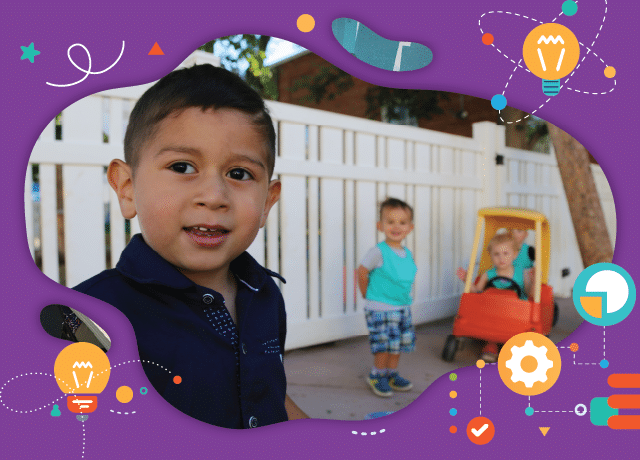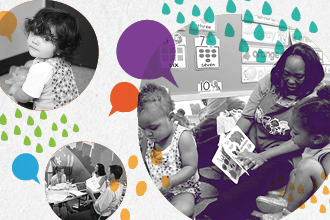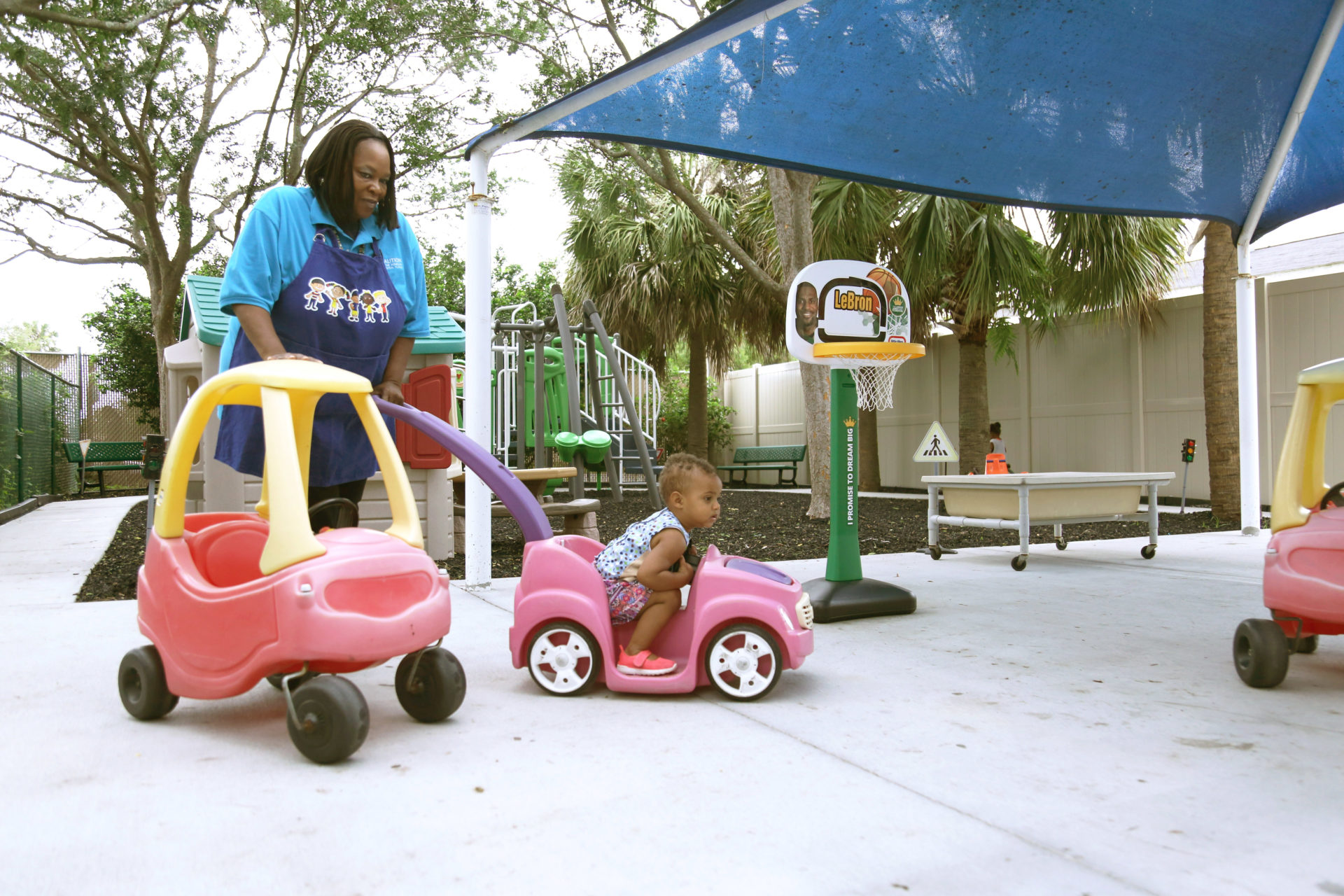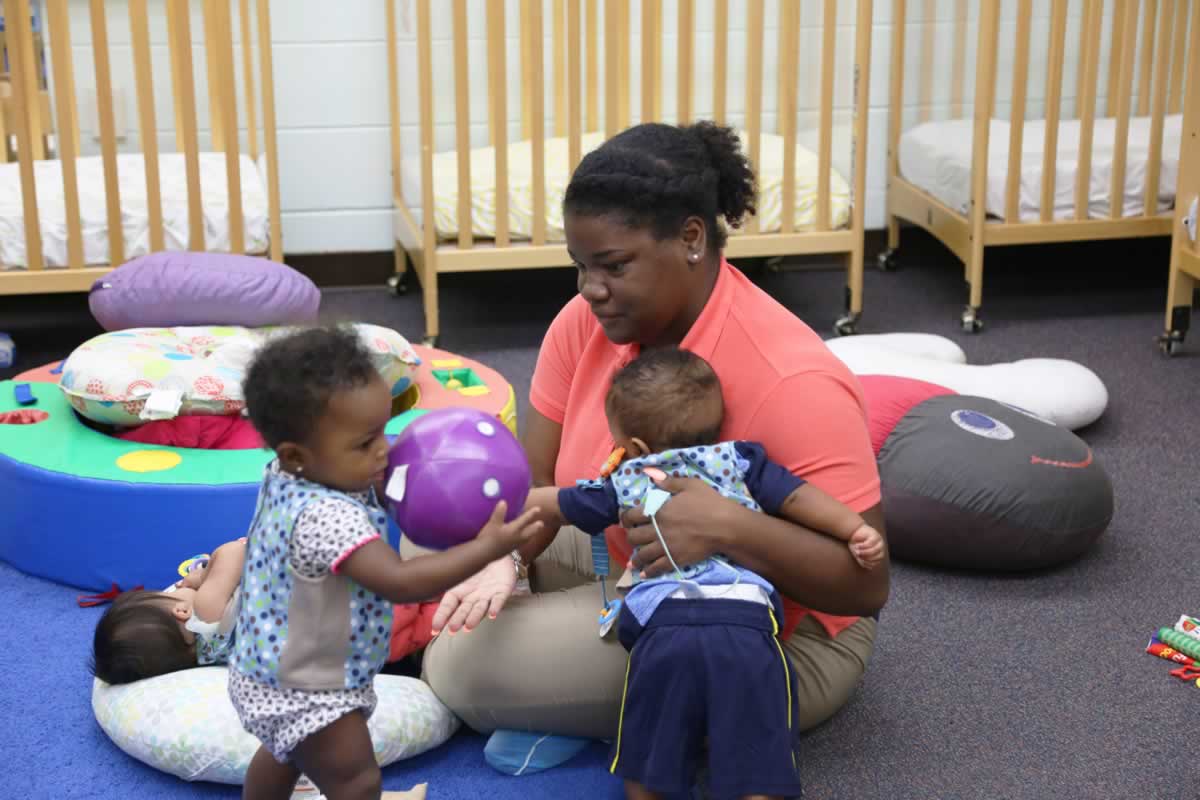When people talk about the child care “fiscal cliff,” they’re almost always talking about access. They’re talking about recruiting and retaining early childhood teachers so infants, toddlers, and preschoolers have a place to go while their parents go to work.
Just as important as access, however, is quality. A high-quality early education setting is the foundation of everything to come in a child’s life.
In a recent webinar, we invited state leaders from Ohio and Tennessee to talk about decoding the alphabet soup of early childhood education funding streams in the face of the fiscal cliff: PDG B-5, CCDBG, CLSD, ARPA, and more. From Ohio there were Todd Barnhouse and Kelly Slade, executive director and professional development coordinator, respectively, with the Ohio Child Care Resource & Referral Agency (OCCRRA), alongside Rachael Moore, the state’s PDG B-5 project manager. From Tennessee, we welcomed Heather Hicks, chief officer of statewide initiatives with Signal Centers and director of TN CCR&R.
Together, they painted the bird’s-eye view of their states’ early childhood initiatives. They also zoomed in on specific strategies and partnerships, including investments in the LENA Grow® professional development program. What’s clear, both in the big picture and in the details, is that quality matters. States urgently need effective ways to support teachers and improve child outcomes.
Lesson #1: States can fund quality initiatives without sacrificing their commitment to access.
For those leading early childhood initiatives at the state level, navigating federal funding opportunities means balancing matters of access with matters of quality.
To hear Ohio and Tennessee’s leaders describe the breadth of their early childhood initiatives is to be reminded of just how much falls within their purview. At stake are young children’s mental and physical health, their access to books and computers in the home, and their access to high-quality care and education outside the home. And what’s more, that high-quality care and education outside the home must be facilitated by well-trained, highly motivated professionals.
States manage these competing priorities by seeing the interconnections at play. They make clear that an investment in workforce development is also an investment in child care access. For one, professional development programs designed to increase quality, including LENA Grow, can also contribute to teacher recruitment and retention, which naturally contribute to increased access for families.
Lesson #2: States recognize that interaction is key to quality.
What makes an early childhood education setting “high-quality”? The physical environment itself plays a role: abundant books and toys, for instance. Adequate adult-child ratios are important as well. Many states’ Quality Improvement Systems (QIS) dictate — and quantify — exactly what constitutes a high-quality setting.
One component of high-quality child care that has taken center stage in recent years is adult-child interaction: How robust is the classroom’s language environment? How many conversational turns do children experience? How equitably are those language interactions spread around? Even before they can “talk,” babies are communicating. And there’s ample evidence that if adults communicate back to them, amazing things happen to children’s brains, to their overall development, and to their long-term outcomes.
Both Ohio and Tennessee have prioritized children’s language environments in their states by adopting and scaling LENA Grow. It’s a professional development program for early childhood educators with a laser focus on fostering highly interactive classrooms full of conversational turns.
Lesson #3: States are more alike than they are different.
The structure of Ohio’s early childhood initiatives and the departments in charge of them is nothing like that of Tennessee. However, when you look past the department names and initiative titles and look instead at the forward-thinking visions, you see how different states are working toward common causes.
For example, Barnhouse described a sophisticated workforce registry to track areas of need throughout Ohio, while Hicks described a new apprenticeship program to firm up the early educator workforce in Tennessee. The common goal: reliable, consistent, high-quality early education.
Lesson #4: Similar quality initiatives can have very different origin stories.
In Ohio, one-time funds from the American Rescue Plan Act (ARPA) went toward the state’s initial investment in the LENA Grow program. From the start, they envisioned a statewide rollout of the program. Moving forward, they’re sustaining and scaling the program with more stable Preschool Development Grant (PDG) funds.
In Tennessee, LENA Grow got its start through place-based philanthropy. With grants from the Urban Child Institute and the Stranahan Foundation, the University of Memphis’s Coordinated Effort to Enhance Development (CEED) served as the backbone of a county-wide implementation of LENA Grow starting in 2017. Then, in 2023, building on the program’s momentum in Memphis, the state’s Department of Human Services devoted quality dollars from the Child Care & Development Block Grant (CCDBG) to expand LENA Grow statewide.
In a post-webinar survey, other leaders in attendance identified the following funding streams that would most apply to quality improvement initiatives like LENA Grow:
- Child Care Development Block Grant (CCDBG) — Quality Funding.
- Preschool Development Grants Birth Through Five (PDG B-5).
- Comprehensive Literacy Development Grants (CLSD).
- Every Student Succeeds Act (ESSA) Title I.
- Elementary and Secondary Schools Emergency Relief Fund (ESSER).
- Philanthropic grant funding.
Lesson #5: It’s more important than ever for quality initiatives to serve multiple purposes.
The child- and teacher-level outcomes from LENA Grow couldn’t be clearer. In both Ohio and Tennessee, for instance, more than 85 percent of participating educators reported higher levels of satisfaction and confidence in their jobs. In addition, the children who came into the program experiencing the least amount of interaction with their teachers saw the greatest gains. This equates to greater classroom equity, backed up by data. Research suggests these higher levels of interaction will translate to improved long-term academic outcomes.
Child- and teacher-level outcomes are just two important pieces of the puzzle. The role of objective data from programs like LENA Grow will only be elevated because of the funding cliff. States will need more programs that serve multiple purposes. Furthering individual outcomes may be a program’s primary aim, but states also need simple ways to collect evidence and improve data-based decision making at higher levels. The organizations that partner with LENA have the advantage of investing in outcomes on the one hand and unique child-, room-, center-, and state-level data and evidence on the other.








